#mosaic del sur
Text
Tal día como hoy 22 de abril ...
2010: Se hunde la plataforma de extracción petrolífera Deepwater Horizon frente a la costa de Estados Unidos, provocando uno de los peores desastres medio ambientales de la historia.

1993: Aparece la versión 1.0 del navegador de internet Mosaic en Estados Unidos.

1970: Se celebra el primer Día de la Tierra.
1931: Se inaugura el Aeropuerto de Barajas, en Madrid (España).
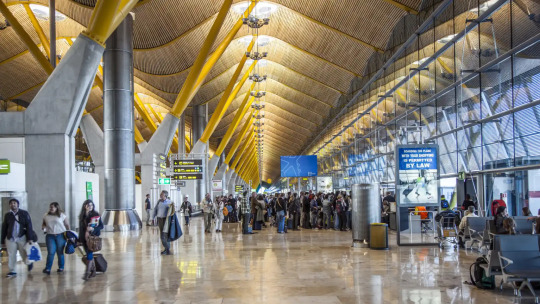
1898: Buques Estadounidenses bloquean la bahía y entrada a La Habana (Cuba) iniciando el conflicto bélico que acabará en la guerra contra España.

1855: La reina de España, Isabel II, firma una ley que asegure la creación de la primera red electrotelegráfica española.

1779: El navegante español Francisco de Viedma y Narváez funda las aldeas de Viedma y Carmen de Patagones, en el sur del Virreinato del Río de la Plata (actual Argentina).
1529: Se firma el tratado de Zaragoza por el que España y Portugal se dividen las tierras en América, creando una frontera marcada por una línea 17 grados al este de las islas Molucas.
1519: El conquistador español Hernán Cortés desembarca cerca del actual puerto de Veracruz (actual México).
1500: El navegante portugués Pedro Álvares Cabral llega a las costas del actual Brasil y se convierte en el primer europeo en hacerlo.
4 notes
·
View notes
Text
Leader dans la fabrication des Carreaux de Ciment - MOSAIC del SUR
L’usine MOSAIC DEL SUR ® fabrique et commercialise des Carreaux Ciment et des carreaux Granito. 500+ modèles : hexagonaux, carreaux « tendance » ou classiques, couleurs, plinthes et livraison en 7 à 10 jours ouvrables.
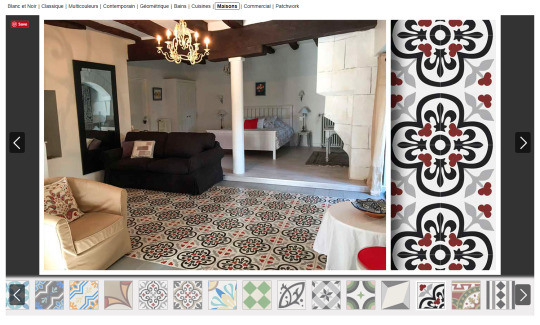
0 notes
Text
Benvenuti al Sud - Episode 2
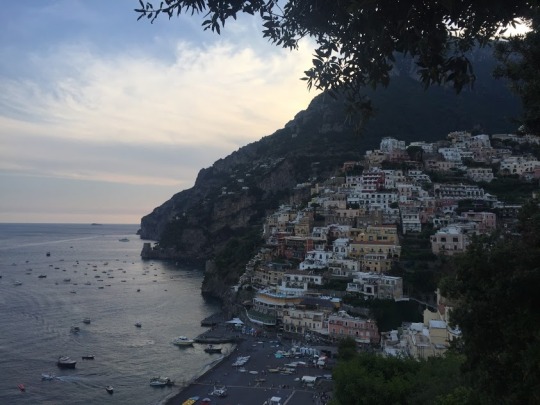
Ciao Salerno!
Notre logement, en théorie, était ubique très stratégiquement: juste entre le Vésuve et les monts de la péninsule d’Amalfi. En théorie. Car, n’importe quelle heure, il y a avait un trafic venu directement de l’enfer. Le premier jour nous fuyons à Salerne, la ville d’entrée à la côté d’Amalfi. C’est un lieu très beau, très italien, avec le linge tendu dans la rue et les façades qui perdent un peu de leur couleur. Nous restons que quelques heures (on mange dans un petit resto pas trop cher mais délicieux) et après on continue vers les sud, comme le gars de l’officine du tourisme nous avait conseillé. C’est comme ça qu’on s’arrête au village de Castellabate, le lieu eu le film “Benvenuti al Sud”, de laquelle j’ai pris le nom, a été filmé. Si vous ne la connaissez pas, c’est la version italienne de “Bienvenus chez les Cht'is”, définitivement à voir!
Le gars de l’officine du tourisme avait raison, le trafic était beaucoup plus calme et les paysages aussi très beaux.


Keep the Italian post service alive by buying REAL stamps and not those overpriced weird & ugly geotag stamps when sending postcards from Italy!
Unsere Unterkunft lag, theoretisch, ziemlich günstig: genau zwischen dem Vesuv und den Bergen der Amalfiküste. Theoretisch. Denn egal zu welcher Uhrzeit wir außer Haus gingen waren die Straßen verstopft, als wäre es Freitagabend. An unserem ersten Tag flüchteten wir nach Salerno, die Stadt die den südlichsten Punkt der Amalfihalbinsel markiert. Es ist ein sehr süßes italienisches Städtchen, mit Wäscheleinen die die engen Gassen überspannen und den typischen, etwas heruntergekommenen Häuserfassaden. Wir bleiben nur ein paar Stunden (essen zu Mittag in einem sehr günstigem und gutem Restaurant) und fahren weiter nach Süden, wie es uns der überaus freundliche Touristeninformationsmitarbeiter empfohlen hatte. So machen wir halt in Castellabate, wo der Film “Benvenuti al Sud” von dem ich mir den Titel ausgeliehen habe, gedreht wurde. In der Tat war der Verkehr, wie versprochen, sehr viel ruhiger und die Landschaft mindestens genauso schön.

Beautiful detail of a column in the cathedral of Salerno, the mosaics are breathtaking and so unique!

Nuestro alojamiento, en teoría, estaba muy bien ubicado: justo entre el Vesubio y las montañas de la península deç Amalfi. En teoría. Porque había, a cualquier hora del día, un tráfico como si fuera viernes por la tarde al salir del trabajo. El primer día huímos hacía Salerno, la ciudad de entrada desde el sur a la costa amalfitana. Es un sitio muy bonito, muy italiano, con callecitas estrechas, la ropa colgada en los balcones y las fachadas de las casas que pierden ya un poco de color, aunque parece que en los últimos años se ha trabajado mucho para restaurar algunos palacios. Sòlo nos quedamos algunas horas (comimos en un sitio bonito y asequible), y luego continuamos hacía el sur como nos aconsejó el empleado de la oficina de turismo. Es por eso que paramos en Castellabate, pueblo donde fue rodada la película “Bienvenidos al Sur”, de la cual he prestado el título. Tenía razón el encargado de la oficina de información, el tráfico estaba mucho más tranquilo que más al norte y los paisajes eran igual de bonitos.
Lemons & ciuccios

Le deuxième jour de notre séjour en Campanie, nous osons l’aventure de découvrir la côte amalfitaine à pied. On nous avait déjà dit que pour garer la voiture ça allait intéressant, donc on l’a laissé touuuut en haut du village de Maiori, presque dans la forêt. Notre plan était d’arriver jusqu’à Positano, pour ne pas dépenser une fortune en billets d’autobus et passer la moitié de la journée attendant qu’il arrive. Au final, on est arrivée “que” à Praiano, l’avant-dernier village, car des mauvaises nuages annonçaient rien de bon à l’horizon.
La première étape, de Maiori a Minori était très bien indiqué, c’est le fameux “Sentiero dei Limoni”. Effectivement, on voit plein de citrons, produit d’exportation plus important de la côte, et aussi des “ciuccios”, comme les locaux appellent les ânes. Nous continuons un peu sur la route normale pour arriver jusqu’à Amalfi, d’où nous prenons un chemin qui passe au-dessus des villages. Sous le soleil brûlant et avec une vue merveilleuse sur la mer et les autres villages, nous passons entre du romarin sauvage, des oliviers et agaves. Malheureusement le sentier n’est (presque) pas marqué et nous devons avoir confiance en notre sens d’orientation. En plus, il ne vient presque pas entretenu, donc il y a des plantes partout, quelque passage dangereux et pleine de déchets aux bords du chemin (ce qu’est bizarre car nous voyons personne utiliser le chemin). C’est une peine que ces chemins ne viennent pas exploités un peu plus touristiquement, car nous trouvons qu’on voit beaucoup plus de la côte et de la nature que quand on prend le bus.
Positano fût un peu décepcionnant au final, car il y a que des hôtels et des boutiques qui vendent toutes la même chose. Et c’est ici que nous nous rendons compte la première fois de la surexploitation des plages italiennes: les chaises longues touchent presque l’eau et la plage libre mesurait même pas six mètres en largeur.

An unserem zweiten Tag in Kampanien stürzten wir uns in das Abenteuer “Amalfiküste zu Fuß zu erkunden”. Wir waren bereits über die Parksituation vorgewarnt und ließen das Auto gaaaaanz oben in Maiori stehen, fast schon im Wald. Unser Plan war zu Fuß bis nach Positano zu gehen, um uns das teuer Busticket und die nervtötenden Wartezeiten zu sparen. Schlussendlich kamen wir “nur” bis Praiano, das vorletzte Dorf, da unschöne Wolken am Horizont auftauchten.
Die erste Etappe, von Maiori nach Menori, war sehr gut beschildert, da es sich hierbei um den berühmten “Sentiero dei Limoni” handelt. Tatsächlich sehen wir sehr viele Zitronen, wichtigstes Exportprodukt der Küste, und sogar ein paar ciuccios (wie hier Esel genannt werden). Wir gehen ein bisschen der normalen Straße entlang bis nach Amalfi, von wo wir einen Weg nehmen, der über den Dörfern verläuft. Unter der strahlenden Sonne und mit herrlichem Blick aufs Meer und den Dörfern spazieren wir zwischen wildem Rosmarin, Olivenbäumen und Agaven. Leider sind die Wege sehr schlecht beziehungsweise gar nicht markiert und wir müssen auf unseren Orientierungssinn vertrauen. Die Wege werden kaum oder gar nicht in Schuss gehalten, es wachsen also überall Pflanzen, manche Stelle ist sogar etwas gefährlich und es liegt überall Müll herum (was schräg ist weil wir keiner einzigen Person begegnet sind). Es ist schade, dass diese Wanderwege nicht mehr touristisch genutzt werden, da man mit dem Bus den ganzen Tag mit Warten verbringt und viel weniger von der Natur und der Landschaft hat.
Positano hat uns etwas enttäuscht, weil es fast gänzlich aus Hotels und Geschäften besteht, die alle ungefähr dasselbe verkaufen. Hier stellten wir auch zum ersten Mal die unglaubliche Ausbeutung italienischer Strände fest: die Liegestühle stehen fast schon im Wasser und der öffentliche Strand war, wenn überhaupt, nur mickrige sechs Meter breit.
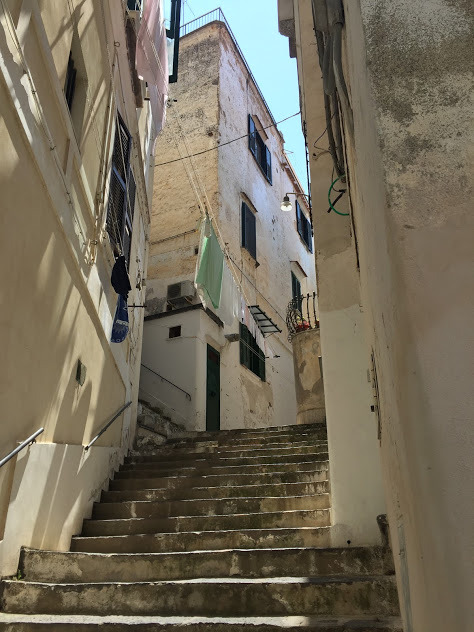

El segundo día de nuestra estancia en Campania nos pusimos en marcha para descubrir la costa amalfitana. Nos habían avisado que iba a ser imposible aparcar con el coche, así que lo dejamos en Maiori toooodo arriba del pueblo, casi ya en el bosque. El plan era ir a pie hasta Positano para ahorrarnos el costoso billete y los viajes penosos en autobús. Llegamos hasta Praiano, el pueblo anterior, pero visto que salieron unas nubes muy feas decidimos parar allí.
La primera etapa del camino, desde Maiori a Menori, estaba muy bien marcada, ya que se trata del famoso “Sentiero dei Limoni”. Efectivamente había un montón de limones, el producto estrella de la costa amalfitana, e incluso vimos a unos ciuccios (es así como llaman a los asnos en su dialecto). Continuamos un poco por la carretera normal hasta Amalfi, y desde allí cogimos un sendero que pasaba por arriba de los pueblos. Siempre con un solazo increíble y unas vistas preciosas sobre el mar y los pueblos, pasamos entre olivos, romero salvaje, agaves y el resto de plantas típicas de esta zona. Tristemente, los caminos estaban muy mal señalizados, o incluso no existía ningún tipo de ayuda de orientación y teníamos que confiar en nuestra intuición. Además, los caminos estaban muy mal cuidados, con plantas que crecían por todos los lados, basura a los lados e incluso algún punto algo peligroso. Es una pena que no esté mejor cuidado, ya que te pasas la vida esperando si haces la costa amalfitana en autobús, y además no aprecias tanto la naturaleza y los paisajes.
Positano fue un poco decepcionante, ya que las calles consisten en hoteles y tiendas que venden todas lo mismo. Fue el primer día que nos dimos cuenta de lo sobreexplotadas que están las playas italianas. La playa libre de Positano medía, a lo mejor, 6 metros de ancho, y el resto del litoral estaba cubierto con sombrillas y tumbonas de alquiler.
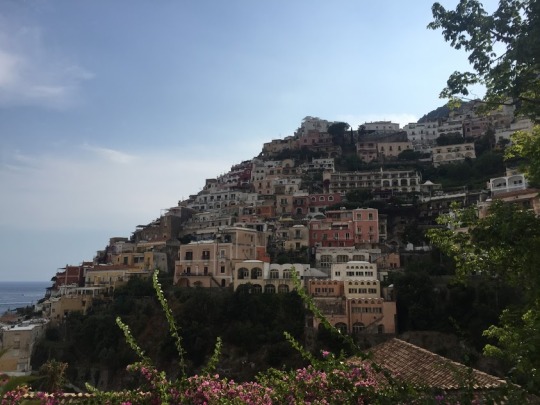
Attention: hot!
Le troisième jour de notre séjour nous visitons Pompei. Vu qu’on est arrivé à l’heure d’ouverture, on a pas du faire la queue pour les billets, mais les premiers bus de touristes étaient déjà en train d’arriver. L’entrée pour moi c’étaient 2€ (<26 ans de l’UE) et 15€ pour Miguel. Ce prix ne contient pas l’audioguide (+8€) et même pas une carte du lieu (elle vient qu’avec l’audioguide). Le terrain est énorme, nous y passons 5 heures, mais vue qu’il n’y a ni un panneau explicatif et sans carte on ne sait pas vraiment où on y est, on n’a pas apprécié la visite autant comme on l’avait imaginé. Mais vu qu’avec toutes les touristes y il a par force un guide qu’on entend, on a appris quand même quelque chose. Il y a avait pas mal de maisons serrées, comme par exemple la maison du Faune avec le fameux mosaïque d’Alexandre le Grand (il paraît qu’ils n’ont plus d’argent pour les entretenir - bizarre). Ce que vaut absolument le détour c’est la Ville des Mystères. On peut y voir des fresques avec des couleurs si vives qu’on a l’impression qu’ils ont été peint hier! La dernière surprise de la visite: 18€ pour le parking.
Am dritten Tag fuhren wir schon früh am Morgen nach Pompei. Wir mussten nicht Schlange stehen, da die Kassen gerade erst geöffnet hatten, aber es kamen bereits die ersten Reisebusse an. Der Eintritt kostete 2€ für mich (<26 EU-Bürger) und 15€ für Miguel. Dieser Preis enthält weder die Audioguide (8€) noch die Karte des Städtchens (kriegt man nur zum Audioguide dazu). Das Areal ist riesig, wir sind ungefähr 5 Stunden rummarschiert, aber es hängt nirgends auch nicht nur ein Schild mit irgendeiner Erklärung, sodass man ohne Audioguide oder Fremdenführer (50€ pro Person) nicht die geringste Ahnung hat was man gerade sieht. Naja, schlussendlich kriegt man doch etwas mit, weil bei den ganzen Touristengruppen sicher eine Sprache dabei ist, die man versteht. Ebenfalls waren viele Häuser geschlossen, wie zum Beispiel das Haus des Faunes mit dem berühmten Alexander-Mosaik (anscheinend sind sie pleite - überraschenderweise - und viele Häuser einsturzgefährdet). Was absolut den Umweg wert ist, ist die “Villa dei Misteri”, die etwas abgelegen liegt. Dafür kann man dort wunderschöne Fresken bewundern, die mit ihren brillanten Farben aussehen, als wären sie erst gestern gemalt worden. Die letzte Überraschung waren dann die Parkgebühren: 18€ für fünf Stunden.
El tercer día nos fuimos pronto por la mañana a Pompeia, para visitar las ruinas de la ciudad antigua. No tuvimos que hacer cola, ya que acababan de abrir, pero estaban llegando ya los autobuses llenos de gente. La entrada fueron 2€ para mi (soy estudiante de la Unión Europea menor de 26 años), y 15€ para Miguel. Este precio no incluye el audioguía (8€ adicionales) y tampoco un mapa del sitio (solo venía con el audioguía). El área es enorme, pasamos 5 horas pateando y no pudimos ver todo, pero no hay ni un solo cartel explicativo, así que sin audioguía o guía personal (50€ por persona) no tienes ni la más mínima idea de lo que estás viendo. Bueno, al final te enteras de algo, ya que vas junto a mil millones de grupos turísticos y algún idioma siempre lo entiendes. Además estaban cerrados muchos sitios, como por ejemplo la Casa del Fauno donde se encuentra el famosísimo mosaico de Alejandro Magno. Ahora bien, lo que absolutamente vale la pena ir a ver es la Villa de los Misterios, que se encuentra en las antiguas afueras de Pompeia. Está un poco lejos (sobre todo por el mediodía se alarga la distancia), pero las pinturas en las paredes de la casa siguen intactas y los colores brillan como si los hubieran aplicado ayer.
La última sorpresa fue el coste del aparcamiento: nos dejamos 18€.

L’après-midi, nous montons sur le Vésuve. A la recherche d’un boulanger pour prendre un sandwich nous nous avions éloignés de la route pour y aller, donc Google Maps nous manda au milieu des vignobles du fameux “Lacryma Christi”. Comme vous savez sûrement, les terres autour des volcans sont très fertiles, et surtout le vin pousse de merveille (raison pour laquelle les romains se sont installé ici :) ). Comme toujours, le paysage est à couper le souffle, mais quand on dirige la mire vers le sol, l’air manque vraiment: des sacs de déchets partout, des bouteilles en plastique et d’autre choses qui en sortent, et tout ça entre les files du vignoble. La situation n’est pas meilleure dans le parc naturel du Vésuve, les côtés de la route restent sales et abandonnés.
Pour garer la voiture on paye 6€ mais c’est le prix pour la journée. Après il y a un service navette juste à l’entrée du parc mais en 20 minutes à pied on y est. L’entrée au parc coûte 10€ par personne, ce que est un bel peu d’argent, mais combien de fois dans la vie on monte sur un volcan techniquement actif?
Jusqu’au cratère on y met une bonne demi-heure, mais la vue est magique: à droite, la ville de Naples, devant la mer, à gauche les monts de la côte amalfitaine. On entrevoit les îles de Capri et Ischia, et nous croyons d’avoir même reconnu Pompei! C’est impressionnant quand on regarde dans le cratère et on s’imagine la force et le danger qui se cachent en dessous (on ne voit pas du magma :( ). Mais quand on a vu de la vapeur s’échapper d’une petite fente on a décidé de retourner à la voiture.
Am Nachmittag bestiegen wir den Vesuv. Auf der Suche nach einem halbwegs preiswerten Ort wo wir unser Mittagessen kaufen konnten (wir fanden einen Bäcker mit riesigen und günstigen belegten Broten) kamen wir vom Weg ab und Google Maps schickte uns quer durch die Weinberge, wo die Trauben für den berühmten “Lacryma Christi” - Wein angebaut werden. Wie ihr sicherlich wisst sind Vulkanböden überaus fruchtbar und vor allem Wein fühlt sich dort pudelwohl (deswegen haben sich die Römer auch so nah angesiedelt...) Wie immer ist die Landschaft atemberaubend, aber sobald man den Blick auf den Boden richtet bleibt einem wirklich der Atem weg, weil er mit Müll übersät ist. Ganze Berge von Müllsäcken liegen zwischen den Reben, teilweise quillen die Plastikflaschen heraus. Die Situation bessert sich kaum im Nationalpark des Vesuvs, die Straßenränder waren immer noch zugemüllt und verlassen.
Um das Auto zu parken zahlt man 6€, aber der Tarif bleibt der gleiche auch wenn man dort den ganzen Tag parkt. Es gibt einen Shuttlebus für 1€ mehr, der bis zum Eingang des Parks fährt, der aber echt nicht nötig ist weil man zu Fuß vielleicht 25 Minuten bis dorthin braucht. Der Eintritt kostet dann für alle 10€, was jetzt nicht wenig ist aber wie oft im Leben besteigt man einen schlafenden Vulkan?
Bis zum Krater braucht man circa dreißig Minuten und es ist ganz schön anstrengend im Lavasand hinaufzusteigen, aber man wird mit einer wunderschönen Aussicht belohnt: Rechts Neapel, vorne das Meer und links das Gebirge Lattari, welches die Halbinsel von Amalfi bildet. Man kann sogar Ischia und Capri erkennen und wir glauben, sogar die Ausgrabungsstätte von Pompeji ausfindig gemacht zu haben. Es ist beeindruckend in den Krater hinabzuschauen und sich vorzustellen, welche Gefahr darunter lauert, noch dazu wenn man bedenkt dass der Vesuv ja eigentlich gar nicht inaktiv ist (man sieht aber kein Magma keine Sorge). Als wir aber aus einer Ritze etwas Dampf aufsteigen sehen, entschließen wir doch wieder zum Auto zurückzugehen.
Por la tarde subimos al Vesuvio. A la búsqueda de un sitio barato donde comer (encontramos un panadero donde compramos unos bocatas enormes muy ricos) nos habíamos alejado un poco del pueblo desde donde sube la carretera, así que Google Maps nos mandó a coger algunas carreteras chiquitas para acercarnos lo más rápido posible. Pasamos entre los viñedos donde crece el famoso vino “Lacryma Christi”. Como seguramente sabéis, los suelos volcánicos son muy fértiles y, sobre todo, el vino crece de maravilla (por eso los romanos arriesgaron de vivir tan cerca…). Como siempre, el paisaje muy bonito, pero cuando bajamos la mirada al suelo, se nos congelaba la sonrisa: bolsas de basura tiradas entre los viñedos, a veces rotas, así que la basura cubría el suelo entero. Ni siquiera dentro del parque nacional del Vesubio no hubo mejoría, los laterales de la carretera seguían igual de sucios y abandonados.
Para aparcar el coche hay que pagar 6€, pero te podrías quedar el día entero si quisieras. Luego hay un servicio de naveta hasta el inicio del camino que vale un euro más, pero a pie no se tarda mucho para llegar hasta allí. La entrada a la cima del volcán son otros 10€ por persona. ¿Pero cuántas veces en la vida se puede subir a la cima de un volcán potencialmente activo? Hasta la cima se tarda más o menos media hora y es una buena subida, pero el panorama desde arriba es una buena recompensa. A la derecha, la ciudad de Naples, por delante el mar y a la izquierda el Parque Natural de los Montes Lattari, incluso se ven las islas (Capri e Isquia) y la antigua ciudad de Pompeya. Es impresionante mirar dentro a la boca del volcán e imaginarse el peligro que se esconde abajo (no se ve el magma obviamente). Cuando vimos pero un poco de humo/vapor salir (no es broma), fue el momento de empezar la bajada.
3 notes
·
View notes
Text
News 8922
https://all-andorra.com/castile-la-mancha/https://all-andorra.com/mediterranean-resorts-of-spain/https://all-andorra.com/the-hermitage-of-nuestra-senora-virgen-de-gracia/https://all-andorra.com/capricho-de-cotrina/https://all-andorra.com/garcia-de-sola-reservoir/https://all-andorra.com/don-benito-museum-of-the-classic-cars/https://all-andorra.com/monastery-of-yuste/https://all-andorra.com/gabriel-y-galan-reservoir/https://all-andorra.com/the-museum-of-motorcycles-and-classic-cars-in-hervas/https://all-andorra.com/extremadura/https://all-andorra.com/cactus-plant/https://all-andorra.com/best-car-museums/https://all-andorra.com/places-to-visit/https://all-andorra.com/mar-menor/https://all-andorra.com/automobile-and-fashion-museum-in-malaga/https://all-andorra.com/don-benito-museum-of-the-classic-cars/https://all-andorra.com/museum-of-aeronautics-and-astronautics-in-madrid/https://all-andorra.com/the-museum-of-motorcycles-and-classic-cars-in-hervas/https://all-andorra.com/the-salamanca-car-museum/https://all-andorra.com/torre-loizaga-car-museum/https://all-andorra.com/the-fernando-alonso-museum-and-circuit/https://all-andorra.com/costa-calida/https://all-andorra.com/the-region-of-murcia/https://all-andorra.com/the-valencian-community/https://all-andorra.com/the-abbey-of-sacromonte/https://all-andorra.com/the-iznajar-reservoir/https://all-andorra.com/oasys-mini-hollywood/https://all-andorra.com/the-costa-de-almeria/https://all-andorra.com/costa-granadina/https://all-andorra.com/benalmadena-stupa/https://all-andorra.com/butterfly-park-of-benalmadena/https://all-andorra.com/costa-de-la-luz/https://all-andorra.com/costa-del-sol/https://all-andorra.com/andalusia/https://all-andorra.com/costa-del-azahar/https://all-andorra.com/costa-de-valencia/https://all-andorra.com/costa-blanca/https://all-andorra.com/the-monastery-of-sant-jeroni-de-cotalba/https://all-andorra.com/city-of-arts-and-sciences/https://all-andorra.com/the-church-of-the-archangel-michael-on-costa-blanca/https://all-andorra.com/railway-museum-of-catalonia/https://all-andorra.com/marc-vidal-automobile-museum/https://all-andorra.com/castle-palace-of-alacuas/https://all-andorra.com/bunol-castle/https://all-andorra.com/castle-of-jalance/https://all-andorra.com/the-castle-of-montesa/https://all-andorra.com/guardamar-castle/https://all-andorra.com/perouges/https://all-andorra.com/the-monastery-of-notre-dame-de-prouille-the-cradle-of-the-dominicans/https://all-andorra.com/the-pommiers-en-forez-priory/https://all-andorra.com/ars-sur-formans-and-the-presbytery-of-saint-cure-dars/https://all-andorra.com/oingt/https://all-andorra.com/the-cite-du-train-railways/https://all-andorra.com/an-automobile-museum-cite-de-lautomobile-in-mulhouse/https://all-andorra.com/montelimar-aviation-museum/https://all-andorra.com/montbel-lake/https://all-andorra.com/the-park-of-the-hydraulic-animals-main-tourist-facility-in-la-roche-sur-yon/https://all-andorra.com/ile-penotte-with-its-mosaics-of-shells/https://all-andorra.com/talmont-sur-gironde/https://all-andorra.com/le-grand-blockhaus-in-batz-sur-mer/https://all-andorra.com/cire-daunis-cars-museum-france/https://all-andorra.com/trizay-former-benedictine-priory-from-11th-century/https://all-andorra.com/sablonceaux-abbey-and-its-notre-dame-church/https://all-andorra.com/museum-of-naval-aviation/https://all-andorra.com/french-museum-of-armoured-vehicles/https://all-andorra.com/rochefort-martrou-transporter-bridge-france/https://all-andorra.com/villa-ephrussi-de-rothschild/https://all-andorra.com/mougins-old-village-and-its-arts-history/https://all-andorra.com/roda-roda-lleida-automobile-museum/https://all-andorra.com/the-abbey-of-caunes-minervois-founded-in-780/https://all-andorra.com/minerve/
0 notes
Photo

Nouveautés 25 févrierEnfin c'est la fin de semaine, on ce lâche lousse :Emporium Microbrasserie- GoonNEIPA de couleur dorée et très voilée aux arômes intense d’agrumes et de fruits exotiques comme le fruit de la passion et l’ananas.- Galactic PunchNEIPA DDH de couleur dorée et très voilée arômes intense d'agrumes, de pêches et de fruit de la passion.- Pilsen LoveSaveurs: Céréales, Miel et Fleurs5e Baron- Del Boca VistaNew England IPA avec Moutere, Motueka et Mosaic L'Espace Public - Brasseurs de quartier- Biere De GrappeNotre ale délicate a macéré plusieurs semaines sur des marcs de Frontenac gris du vignoble Les Fragments, en Outaouais. Le fruit de cette union complice; un breuvage frais, acidulé et vineux.Microbrasserie La Chouape- Citron LimeBerliner Weisse au citron et à la lime.
0 notes
Text
Sterioxy (Sterioxes)

Sterioxy to jeden z gatunków (podobno) nierozumnych Galaktyki z uniwersum Nano Battlers, zamieszkujących planetę Karemo.
Wygląd zewnętrzny
Wysokie na ok. 2 metry, długie na 4. Pokryte twardym, szarym pancerzem składającym się z nachodzących na siebie płyt. Na głowie i tułowiu występują kolce, na końcu odwłoka – potrójne żądło. Dwie pary oczu złożonych, zazwyczaj fosforyzująco zielonych. Trzy pary odnóży krocznych, pierwsza wyposażona w szczypce. Jedna para czułków. Pod środkową płytą pancerza schowane są dwie pary przezroczysto zielonych skrzydeł. Występuje dymorfizm płciowy – samce zazwyczaj nieco większe od samic, kolce samców są niebieskie, a samic – różowy.
Układ oddechowy
Składa się z systemu rurek, o wylotach i wlotach ukrytych pod pancerzem, jak u ziemskich stonóg (należy wiedzieć, że stonogami nie powinno się nazywać wijów jak krocionogi czy skolopendry, tylko pewne skorupiaki lądowe z rzędu równonogów, mające zresztą dokładnie 14 sztuk odnóży krocznych) – jednakże, są również wyposażone w płuca, podobne do ptasich – rurkowate, sztywne, połączone z workami powietrznymi mającymi zastosowanie w lataniu i pozwalające na podwójne oddychanie. Płuca są połączone z układem pokarmowym i, oczywiście, owym systemem rurek.
Układ szkieletowy
Twardy, lecz lekki szkielet zewnętrzny, a także chrzestny szkielet wewnętrzny (przy czym ten endoszkielet jest raczej słabo rozwinięty, elastyczny i wiotki). Celomatyczne.
Układ pokarmowy
Występują żuwaczki, a także ruchoma żuchwa i górne zęby (niektórzy mówią na nie "szczękoczułki", ale nie wiadomo, czy to naukowo poprawne). Obecność języka. Żrąca ślina pozwala im na trawienie zewnętrzne, niemniej jednak wewnętrzne też występuje. Poza tym, układ pokarmowy nie różni się szczególnie od ludzkiego.
Układ krwionośny
Zamknięty. Serce jak u ssaków, ptaków i krokodyli – dwa przedsionki, dwie komory. Przegroda pełna. Krew natlenowana jest jasnozielona, a odtlenowana – ciemnozielona.
Układ nerwowy
Scentralizowany, występuje struna grzbietowa.
Narządy zmysłów
Dwie pary oczu złożonych zapewniają szerokie pole widzenia i silną wrażliwość na ruch, za to widziane przez nie obrazy wyglądają jak mozaiki. Dobrze widzą w nocy. Narządami słuchu i węchu są czułki, smaku – język. Zmysły chemiczne raczej słabe, za to silna wrażliwość na wstrząsy.
Rozmnażanie i dojrzewanie
Jajorodne. Jajka centro-, a zarazem polilecytalne. Przeciętna średnica 40 cm, kształt kulisty, barwa bladozielona, lekko świecą w ciemności. Żółtko to elastyczna, jasnozielona kula, zaś białko jest koloru butelkowego, wodniste i łatwo się pieni. Wtórouste trójwarstwowce. Przeobrażenie niezupełne – młode osobniki to po prostu miniaturki imago, tylko że nie mają skrzydeł ani kolców (w miejsce tych ostatnich występują plamy – odpowiednio niebieskie dla samców i różowe dla samic). Okres godowy trwa praktycznie cały rok. Sterioxy uchodzą za długowieczne.
Mechanizmy obronne
W razie zagrożenia zwijają się w kolczaste kule i toczą się na wroga. Walczą też ostrymi szczypcami, żrącą śliną, żądłami z silnym jadem, a także gryzą.
Środowisko
Zazwyczaj podziemia i jaskinie.
Pokarm
Wszystkożerne, z przewagą karmy zwierzęcej.
Tryb życia
Zajmują się w dużej mierze kopaniem nowych tuneli i jaskiń, a także polowaniem i zbieractwem. W swych jaskiniach hodują (jak termity) czasem rośliny i grzyby, a nawet pieką sobie "chleb" ze zmielonych przez siebie ziaren (jak mrówki żniwiarki).
Zachowanie
Humanoidów raczej nie atakują, chyba że zostaną sprowokowane.
Struktura społeczna
Kolonii przewodzi największy i najsilniejszy samiec, zwany królem. Ma on charakterystyczną "koronę" z siedmiu dłuższych kolców na głowie. Ma on monopol na rozmnażanie się. Samce to głównie myśliwi, budowniczowie i żołnierze, a samice zajmują się hodowlą i opieką nad młodymi. Wydają odgłosy podobne do plucia połączonego z parskaniem i charczeniem. Podczas lotu ich skrzydła wydają zaś z siebie głośne buczenie. Interesujące jest to, że na ścianach ich jaskiń odnajduje się nierzadko dziwne ślady, które sprawiają wrażenie, jakby były swego rodzaju pismem, co pozwalałoby na zakwalifikowanie sterioxów do gatunków rozumnych. Aktualnie jest to jednak wielka niewiadoma.
Znaczenie
Cenione ze względu na lekkie i wytrzymałe pancerze i jadalne mięso.
Zagrożenie
Gatunek najmniejszej troski.
Translation:
Sterioxes is one of the (supposedly) non-sapient species from Galaxy from the Nano Battlers universe, inhabiting the planet Karemo.
Appearance
Approx. 2 meters high, 4 meters long. Covered with hard, gray armor consisting of overlapping plates. There are spikes on the head and body, and at the end of the abdomen - a triple sting. Two pairs of compound eyes, usually phosphorescent green. Three pairs of walking legs, the first with tongs. One pair of antennae. Two pairs of transparent green wings are hidden under the middle armor plate. There is sexual dimorphism - males are usually slightly larger than females, spines of males are blue, and spines of females - pink.
Respiratory system
It consists of a system of pipes with outlets and inlets hidden under the armor, as in the Earth's centipedes woodlice (which are not actually lice, only terrestrial crustaceans) - however, they are also equipped with avian-like lungs - tubular, rigid, connected to air sacs suitable for flying and allowing double breathing. The lungs are connected to the digestive system and, of course, to this tube system.
Skeletal system
A hard but light outer skeleton as well as a godfather inner skeleton (this endoskeleton is rather underdeveloped, flexible and flabby). Celomatic.
Digestive system
There are mandibles, as well as a movable lower jaw and upper teeth (some call them "jaw bone", but it's not known if this is scientifically correct). The presence of language. The corrosive saliva allows them to digest externally, but internally too. Besides, the digestive system is not that different from the human one.
Circulatory system
Closed. The heart like mammals', birds' and crocodiles' ones - two atria, two chambers. Full septum. Oxygenated blood is light green, and deoxygenated blood is dark green.
Nervous system
Centralized, there is a dorsal chord.
Sensory organs
Two pairs of compound eyes provide a wide field of view and a strong sensitivity to movement, but the images they see look like mosaics. They see well at night. The organs of hearing and smell are antennae, of taste - the tongue. The chemical senses are rather weak, but a strong sensitivity to shocks.
Reproduction and maturation
Egg-bearing. Eggs centrolecythal and at the same time macrolecythal. Average diameter 40 cm, spherical shape, pale green in color, slightly glow in the dark. The yolk is a flexible, light green ball, while the egg white is bottle-colored, watery and foams easily. Three-layer second-mouths. Incomplete transformation - juveniles are simply miniatures of imago, but they do not have wings or spines (instead of the latter, there are spots - blue for males and pink for females, respectively). The mating season lasts practically all year round. Sterioxes are considered to be long-lived.
Defense mechanisms
In case of danger, they curl up into spiky balls and roll on the enemy. They also fight with sharp claws, caustic saliva, stingers with strong venom, and also bite.
Environment
Usually dungeons and caves.
Food
Omnivorous, with a predominance of animal food.
Lifestyle
They are largely involved in digging new tunnels and caves, as well as hunting and gathering. In their caves they sometimes (like termites) grow plants and mushrooms, and even bake their own "bread" from ground grains (like reaper ants).
Behavior
They usually don't attack the humanoids unless they're provoked.
Social structure
The colony is led by the largest and strongest male, called the king. It has a characteristic "crown" of seven longer spikes on the head. He has a reproductive monopoly. Males are mainly hunters, builders and soldiers, while females farming and care for the young. They make noises similar to spitting combined with snorting and wheezing. As they fly, their wings make a loud droning. It is interesting that on the walls of their caves there are often strange traces that give the impression that they are a kind of writing, which would qualify sterioxes as intelligent species. Currently, however, it is a great unknown.
Importance
Valued for its light and durable carapaces and edible meat.
Danger
Kind of Least Concern.
Traduko:
Sterioxoj estas unu el la specioj de (supozeble) neraciaj specioj del Galaksio de la universo Nano Battlers, enloĝanta la planedon Karemo.
Aspekto
Ĉirkaŭ 2 metrojn alta, 4 metrojn longa Kovrita per malmola, griza kiraso konsistanta el imbrikitaj platoj. Estas pikiloj sur la kapo kaj korpo, kaj ĉe la fino de la abdomeno - triobla piko. Du paroj de kunmetitaj okuloj, kutime fosforeskaj verdoj. Tri paroj da irantaj kruroj, la unua kun pinĉiloj. Unu paro de antenoj. Du paroj de travideblaj verdaj flugiloj estas kaŝitaj sub la meza kirasplato. Estas seksa duformismo - maskloj kutime estas iomete pli grandaj ol inoj, masklaj pikiloj estas bluaj, kaj inoj - rozkoloraj.
Spira sistemo
Ĝi konsistas el sistemo de tuboj kun eliroj kaj enfluoj kaŝitaj sub la kiraso, kiel ĉe la teraj oniskoj - tamen ili ankaŭ estas ekipitaj per birdosimilaj pulmoj - tubformaj, rigidaj, konektitaj al aeraj sakoj taŭgaj por flugado kaj permesantaj duoblan spiradon. La pulmoj estas konektitaj al la digesta sistemo kaj, kompreneble, al ĉi tio tuba sistemo.
Skeleta sistemo
Malmola sed malpeza ekstera skeleto same kiel baptopatro interna skeleto (ĉi tio endoskeleto estas sufiĉe subevoluinta, fleksebla kaj malrigida). Celomataj.
Digesta sistemo
Ekzistas mandibloj, same kiel moveblaj malsupra makzelo kaj supraj dentoj (iuj nomas ilin "keliceroj", sed oni ne scias, ĉu tio estas science ĝusta). La ĉeesto de lingvo. La koroda salivo permesas al ili digesti ekstere, sed interne ankaŭ. Ekster tio la digesta sistemo ne tiom diferencas de la homa.
Cirkula sistemo
Fermita. La koro de mamuloj, birdoj kaj krokodiloj - du atrioj, du ĉambroj. Plena vando. Oksigenita sango estas helverda, kaj senoksigenigita sango estas malhelverda.
Nerva sistemo
Centralizita, ekzistas dorsa akordo.
Sensorganoj
Du paroj da kunmetitaj okuloj donas larĝan vidkampon kaj fortan sentemon al movado, sed la bildoj, kiujn ili vidas, aspektas kiel mozaikoj. Ili bone vidas nokte. La organoj de aŭdo kaj odoro estas antenoj, de gusto - la lango. La kemiaj sensoj estas sufiĉe malfortaj, sed forta sentemo al ŝokoj.
Reproduktado kaj maturiĝo
Ovoportado. Ovoj centritaj kaj polilecitaj samtempe. Meza diametro 40 cm, sfera formo, palverda en koloro, iomete brilas en la mallumo. La ovoflavo estas fleksebla, helverda globo, dum la ovoblanko estas botelkolora, akva kaj ŝaŭmas facile. Tri-tavolaj novbuŝuloj. Nekompleta transformo - junuloj estas simple miniaturoj de imagino, sed ili ne havas flugilojn nek pikilojn (anstataŭ ĉi-lastaj estas makuloj - bluaj por maskloj kaj rozkoloraj por inoj, respektive). La sekspariĝa sezono daŭras preskaŭ la tutan jaron. Sterioxoj estas konsiderataj kiel longevivaj.
Defendaj mekanismoj
En kazo de danĝero, ili kurbiĝas en akrajn pilkojn kaj ruliĝas sur la malamikon. Ili ankaŭ batalas kontraŭ akraj ungegoj, morda salivo, denuncantoj kun forta veneno, kaj ankaŭ mordas.
Medio
Kutime subterejoj kaj kavernoj.
Manĝaĵo
Ĉiomanĝantaj, kun superregado de bestmanĝaĵo.
Vivstilo
Ili plejparte fosas novajn tunelojn kaj kavernojn, kaj ankaŭ ĉasas kaj kolektas. En siaj kavernoj ili foje (kiel termitoj) kultivas plantojn kaj fungojn, kaj eĉ bakas sian propran "panon" el muelitaj grajnoj (kiel rikoltaj formikoj).
Konduto
Ili verŝajne ne atakas humanoidojn, krom se provokite.
Socia strukturo
La kolonio estas gvidata de la plej granda kaj plej forta viro, nomata la reĝo. Ĝi havas karakterizan "kronon" de sep pli longaj pikiloj sur la kapo. Li havas generan monopolon. Maskloj estas ĉefe ĉasistoj, konstruistoj kaj soldatoj, dum inoj reproduktiĝas kaj prizorgas la idojn. Ili faras bruojn similajn al sputado kune kun ronkado kaj kraĉospirado. Iliaj flugiloj laŭte zumas flugante. Estas interese, ke sur la muroj de iliaj kavernoj ofte estas strangaj spuroj, kiuj donas la impreson, ke ili estas speco de skribaĵo, kio kvalifikus sterioksojn kiel inteligentajn speciojn. Nuntempe ĝi tamen estas granda nekonato.
Graveco
Ĝi estas aprezita pro sia malpeza kaj daŭrema karapaco kaj manĝebla viando.
Danĝero
Speco de Malplej Zorgiga.
0 notes
Text
Caffettiera Montréal Caffé Bar
Caffettiera Montréal Caffé Bar, Québec Restaurant, Interior Architecture Photos
Caffettiera Caffé Bar, Montreal, Quebec
30 Oct 2020
Caffettiera Caffé Bar in Montréal
Design: Ménard Dworkind Architecture & Design – MRDK
Location: 2055 rue Stanley, Montréal, Québec, Canada – Golden Square Mile
English text (scroll down for French):
In Italy, going to the coffee bar is not just about the coffee. It’s about taking a break from the day, meeting up with friends or taking the time to contemplate life. Caffettiera Caffé Bar aims to bring that culture to North America at its 745-square-foot commercial space in the heart of downtown Montreal.
The café’s design was inspired by the 1990s. Andreas, the café owner, fondly remembers this as a better time in Italy, when it still had its own currency, a less turbulent political climate and the best soccer team. Caffettiera offers a relaxed atmosphere where you can stop by and stand at the counter for a quick espresso before work, or lounge on the tan leather banquettes for an aperitif and a bite to eat.
A black monolithic terrazzo bar snakes its way through the space, integrating a series of sandwich, pastry and retail displays that are bookended by two points of sale. Signs slide on an orange painted steel beam above the bar and indicate where to pay and order depending on the daily traffic. A cove at the base of the counter creates a seamless transition to the checkerboard mosaic floor. Italian products are proudly displayed on a large shelf that runs the length of the space behind the bar.
The walls are covered in faux-wood plastic laminate panels, a material key to the nostalgia of the café owner. Above, an up lit stepped bulkhead curves around the bathroom block. Two symmetrical banquettes converge at a customer service station backed by a lush planter. Curved mirrors, divided by concrete columns, give a sense of spaciousness to the otherwise tight café. Vintage chairs found in the classified ads were reupholstered with tan leather to match the banquettes. Covering the tables, a mix of five different coloured laminates gives a graphic dimension to the project. Pushing the 90s theme even further, pendant lights fabricated by Lambert & Fils were designed using yellow telephone wire.
In designing Caffettiera, the goal was to highlight the customer experience and was planned in such a way to encourage social encounters while discovering the Italian way of life. An emphasis was put on nostalgia with the help of a scattered array of vintage books, stickers, toys, and photographs from the 1990s. The relaxed environment allows customers to appropriate the space and slowly become an obligatory stop at any hour of the day.
FRANÇAIS
Situé dans le centre-ville de Montréal, Caffettiera est un café bar inspiré de l’Italie des années 90
où les Italiens avaient encore leur propre devise, la meilleure équipe de foot et du temps où le climat politique était un peu moins mouvementé. Caffettiera propose une ambiance décontractée où l’on peut s’y arrêter avant sa journée de travail pour un espresso rapide accoudé au comptoir monolithique de terrazzo ou pour un apéro prolongé dans les banquettes de cuir tan.
Le long comptoir de terrazzo noir intègre le bar, le présentoir à sandwich, l’étalage de produit pour emporter ainsi que la caisse. Il est surplombé d’une structure d’acier de couleur orange muni d’un système d’affichage sur roues permettant de modifier les informations en fonction du temps de la journée et de l’achalandage. La base du comptoir est arrondie éliminant la jonction avec le plancher de mosaïque en damier. Derrière le comptoir, des étagères ont été pensées pour mettre en valeur une variété de produit typiquement italien.
En saillie des murs du fond surplombe une retombée en estrade courbée qui vient couronner les murs recouverts de panneaux de formica imitant le noyer noir, matière très typique des années 90 pouvant éveiller la nostalgie chez certain. Des bandes de DEL y ont été dissimulées pour souligner ce détail architectural.
Les tables et le comptoir debout sont un assemblage de 5 différentes couleurs de formica ajoutant un aspect graphique à l’espace. Les chaises vintages trouvées sur les petites annonces ont été recouvertes de cuir tan pour s’harmoniser aux banquettes. Derrière trois miroirs encadrés se rejoignent au centre des colonnes de béton existantes laissées à nues. Les luminaires suspendus dessinés par MRDK ont été fabriqués par la firme montréalaise Lambert & Fils.
Le processus de design de Caffettiera a été de mettre de l’avant l’expérience client. L’objectif étant de provoquer des rencontres, faire découvrir des produits et donnant l’occasion aux clients de s’approprier le lieu, devenant peu à peu un arrêt obligatoire à toute heure du jour.
Caffettiera Montréal Caffé Bar- Building Information
DESIGNER/ARCHITECT: Ménard Dworkind architecture & design
WEBSITE : https://ift.tt/3kH8kmh
INSTAGRAM : https://ift.tt/2HLHrzq
PROJECT ADRESS : 2055 rue Stanley, Montréal, Québec H3A 1R7
AREA: 745 SQFT
DATE: July 2020
MATERIAL: Mosaic tile, black terrazzo, powder coated steel, Formica laminate, mirror
PHOTOGRAPHY: David Dworkind
Caffettiera Caffé Bar Downtown Montréal, Québec images / information received 301020 from MRDK
Address: 2055 rue Stanley, Montréal, Québec H3A 1R7, Canada
Montreal Architecture
Contemporary Architecture in Montréal
Montreal Architecture Designs – chronological list
Montreal Architecture News
Montreal Restaurants, Cafés & Bar Lounges
Heirloom pizzeria, 30 Saint-Catherine St W
Architects: Ménard Dworkind Architecture & Design – MRDK
photograph : David Dworkind
Heirloom pizzeria
Bar VinVinVin, 1290 Rue Beaubien E, Montréal
Architects: Ménard Dworkind architecture & design
photography : David Dworkind
Bar VinVinVin in Montreal
Ryù Restaurant, 1474 Peel St, Montreal, QC H3A 1S8
Architect: Guillaume Ménard and David Dworkind (MRDK)
photo © David Dworkind
Ryu sushi restaurant Peel Street, downtown Montreal
Miss Wong Chinese Restaurant, Avenue Pierre-Péladeau, Laval, Quebec
Architect: Guillaume Ménard and David Dworkind (MRDK)
photo : David Dworkind architect
Miss Wong Laval Restaurant
Montreal Architecture Walking Tours
Canadian Architecture
Canadian Architecture Offices
Comments / photos for the Caffettiera Montréal Caffé Bar, Québec page welcome
Website: Montreal, QC, Canada
The post Caffettiera Montréal Caffé Bar appeared first on e-architect.
0 notes
Text
Tal día como hoy 22 de abril ...
2010: Se hunde la plataforma de extracción petrolífera Deepwater Horizon frente a la costa de Estados Unidos, provocando uno de los peores desastres medio ambientales de la historia.
1993: Aparece la versión 1.0 del navegador de internet Mosaic en Estados Unidos.
1970: Se celebra el primer Día de la Tierra.
1931: Se inaugura el Aeropuerto de Barajas, en Madrid (España).
1898: Buques Estadounidenses bloquean la bahía y entrada a La Habana (Cuba) iniciando el conflicto bélico que acabará en la guerra contra España.
1855: La reina de España, Isabel II, firma una ley que asegure la creación de la primera red electrotelegráfica española.
1779: El navegante español Francisco de Viedma y Narváez funda las aldeas de Viedma y Carmen de Patagones, en el sur del Virreinato del Río de la Plata (actual Argentina).
1529: Se firma el tratado de Zaragoza por el que España y Portugal se dividen las tierras en América, creando una frontera marcada por una línea 17 grados al este de las islas Molucas.
1519: El conquistador español Hernán Cortés desembarca cerca del actual puerto de Veracruz (actual México).
1500: El navegante portugués Pedro Álvares Cabral llega a las costas del actual Brasil y se convierte en el primer europeo en hacerlo.

(La reina de España, Isabel II)
3 notes
·
View notes
Link

0 notes
Photo
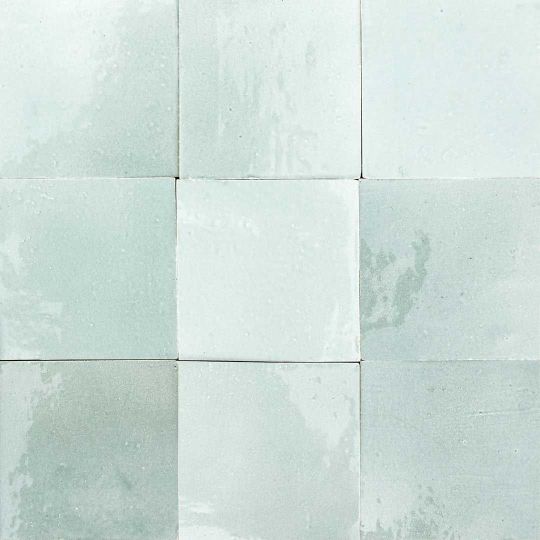
Zellige | Moroccan tiles | Mosaic del Sur https://ift.tt/36aZ5V4
0 notes
Photo

Zementfliesen Online Shop von Mosaic del Sur https://ift.tt/38RVmgk
0 notes
Text
Shahzia Sikander
Nació en 1969, en Lahore, Pakistán.
Estudió en el Colegio Nacional de Artes de Lahore, donde aprendió la disciplina tradicional de la pintura en miniatura indo-persa. En el año 1991 recibió una Licenciatura en Bellas Artes y tiempo después se mudó a Estados Unidos, donde estudió en la Escuela de Diseño de Rhode Island, dónde obtuvo un máster en Bellas Artes en pintura y grabado en el año 1995.
Algunas de las exposiciones más relevantes:
Embajada de Pakistán, Washington DC, Estados Unidos (1993)
Art Celebration 96: Shahzia Sikander. Galería de Barbara Davis, Houston, Texas, Estados Unidos (1996)
Shahzia Sikander: Parallax. Museo Guggenheim, Bilbao, España (2015)
Shahzia Sikander: Éxtasis como sublime, corazón como vector. MAXXI, Roma, Italia (2016)
Algunos de los premios más relevantes:
1997- Premio Louis Comfort Tiffany Foundation.
1999- Premio al logro colectivo creativo de las mujeres del sur de Asia.
2005- Tamgha-e-imtiaz, Medalla Nacional de Honor, Gobierno de Pakistán.
2008 - Premio al mejor artista del año en artes escénicas y visuales presentado por los Premios a la Excelencia del Sur de Asia, 2008.
https://www.skny.com/artists/shahzia-sikander


The Perennial Grace, 2018
Glass mosaic mounted on plywood in glass frame
178,4 x 109,9 cm

Provenance the Invisible Hand, 2009, was made for an installation of objects Sikander selected from the collection of the Cooper-Hewitt, National Design Museum.
#Shahzia#Sikander#1969#60#Pakistán#Colegio Nacional de Artes de Lahore#Escuela de Diseño de Rhode Island#montaje#vídeo#dibujo#pintura#pintor#instalación#multidisciplinar
0 notes
Photo

Cement tiles patterns from Mosaic del Sur #cementtiles #tiles #zementfliesen #fl… https://ift.tt/2OKdr8d
0 notes
Text
Kitchen tile ideas – to add character and personality to your walls and floor
There’s a lot to like about tiles in the kitchen. They are hardwearing, easy to wipe clean and they offer almost endless design possibilities
Looking for kitchen tile ideas and inspiration? Tiles are a key part of kitchen decorating, not only for practical reasons but they are a great way to add a little personality to your look, too. Whether they’re used on the walls, floor or as a splashback, the right tiles can make a huge difference to your finished scheme. Though, with such a large choice of styles, materials and budgets to choose from, it can be difficult to decide on a design. Start by thinking about how your chosen tiles will look with your unit and worktops, room size and colour choices. Do you want to tile large walls or just a small area? With the right planning you can add the perfect finishing touch, so read on for a little kitchen tile inspiration…
Check out our kitchen channel for more great kitchen decorating ideas and inspiration
Kitchen tile ideas
1. Wrap the walls in chic white tiles
Image credit: Lizzie Orme
Add interest to a shaker kitchen by wrapping tiles around the room. Give the white tiles a colourful lift by painting the remaining wall a punchy pink. Tiling half the wall this way is practical and will protect your walls from any kitchen splashes.
2. Add an extra dimension with hexagon tiles
Image credit: David Giles
You don’t need colour to make a statement, filling a white kitchen with different textures, materials and shapes will add interest. Kitchen wall tiles are perfect for doing this. This honeycomb tile blends seamlessly into the white washed walls to create a sleek contemporary look.
3. Mismatch shapes and patterns
Image credit: Lizzie Orme
If you decide to tile your floor and walls, don’t be afraid to mismatch the shape, colour and even finish. On the floor it can be tempting to opt for a simple design, however in this room it is the floor that makes a statement with a decorative blue pattern. Instead the walls have been tiled in a popular herringbone pattern using plain white tiles.
4. Create interest around an island unit
Image credit: David Still
Be adventurous with a statement floor. These patterned floor tiles have been used to border the island unit in this open-plan kitchen. When it comes to design, the sky’s the limit with mosaic tiles, as they can be used to create a variety of patterns and eye-catching details. This patterned tile injects an exotic flavour into a contemporary kitchen by combining pale stone with a Middle Eastern motif.
Get the look
Buy now: Kitchen units, Lewis Alderson & Co
Buy now: Floor tiles, Mosaic del Sur
5. Choose a modern bistro-style vibe with metro tiles
Image credit: Dominic Blackmore
If you have a large wall to fill in the kitchen, consider creating an entire feature wall of metro tiles. Brick-shaped or Metro-style tiles with a distinctive bevel are a popular choice and provide a retro twist. Choose matt flat or glass brick tiles to create a more contemporary feel. Be sure to choose the right grout. Not only is it practical bonding for durability but it’s key to determine whether your pattern stands out or blends in to the overall scheme. It comes in various colours and compounds so do your research.
6. Opt for an eye-catching pattern
Image credit: Ca’ Pietra
Encaustic tiles – with their vibrant colours and striking Moorish designs – are enjoying something of a revival. Bold geometric designs and patchwork styles have been used in commercial settings for a number of years but are becoming increasingly popular in the home. In keeping with the trend towards using colour and pattern in interiors, encaustic tiles are an ideal way of adding visual interest and are crafted in a myriad of shades: bold geometric designs in beautiful pastels; eye-catching monochrome motifs and arresting Moroccan shapes in ochre and burnt orange, emerald green and azure blue. Working equally well with contemporary and traditional interiors, encaustic tiles are versatile product.
Get the look
Buy now: Eye Pattern Tile, £3.96 each, Ca’ Pietra
7. Introduce character with stone
Image credit: David Cleveland
If you want enduring beauty and individual character, look no further than stone. Inherently beautiful and with an incredibly long lifespan, stone has been used on floors for centuries. A textured kitchen tile design will add depth and interest. It is a good choice for high-traffic areas and can be used in farmhouse-style or contemporary kitchens. Seal to protect from stains.
8. Use slate to create a splashback
Image credit: Oliver Gordon
Mimic the exposed-brick look with a tiled slate wall. With its naturally smooth texture and varying shades, from pale grey to dark purple and rich rust, slate is a beautiful choice for walls and splashbacks. Leave your slate tiles ungrouted for added character.
Enjoying these kitchen tile ideas? READ: How to tile a splashback – to protect walls and add interest
9. Lay down porcelain tiles
Image credit: Darren Chung
Love the look of large format tiles? Hardwearing and durable, porcelain tiles are a tried-and-trusted material for kitchen floors. Since porcelain is so strong, tiles can be made thinner, so even huge ones needn’t be heavyweights. Underfloor heating stops the floor from becoming too cold in the winter months.
10. Trick the eye
Image credit: Mandarin Stone
The flooring may look like wood, but is in fact covered in plank-sized porcelain tiles featuring a faux wood grain design – easy to lay over old floorboards and tiles. Anything but ordinary, these tiles will add a splash of personality and character to any scheme.
Get the look
Buy now: Argento Sycamore Porcelain, £39.75 per sq m, Mandarin Stone
11. Fake it with marble effect tiles
Image credit: Mandarin Stone
Marble is an intricately beautifully stone, but it can also be very costly, especially if you have a large area that needs tiling. Why not fake the look with a porcelain tile that looks almost identical to real marble? There are many good-quality marble effect tiles on the market, at a price to suit most budgets.
Get the look
Buy now: Mimica Venato Matt Porcelain, £45.87 per sq m, Mandarin Stone
12. Try a terracotta stone
Image credit: David Giles
For a mellow, rustic floor appearance, terracotta is best. This look even works well in a contemporary kitchen, as shown above. All kinds of stone, terracotta and slate are porous and will need sealing to prevent stains penetrating. Immediately wipe away acidic spills on unglazed floors to keep the seal intact.
Want more kitchen ideas and advice? READ: Kitchen flooring – everything you need to know
We hope these kitchen tile ideas give you inspiration to start you kitchen project.
The post Kitchen tile ideas – to add character and personality to your walls and floor appeared first on Ideal Home.
from Ideal Home https://ift.tt/2X8zOIi
0 notes
Text
The Pros and Cons of Rugs in the Kitchen
Bulgac/iStock
A kitchen rug looks so cozy in shelter magazines, whether it’s a faded Oriental in the breakfast nook or a punchy striped runner along the edge of an island. But as with most fantasy homes that we spy on Instagram, there’s more to the story.
A rug in the kitchen sparks a heated debate in the design world, with some pros despising the look as gross and smelly, while others embrace the idea because it adds warmth and color to an otherwise cold, hard space.
Not sure where you stand? Here are both sides of this argument, plus what you should know if you plan to lay down a rug in the kitchen.
Pro: Soft and warm
Photo by Garrison Hullinger Interior Design Inc.
If you’re at the stove for an hour stirring risotto, you’ll certainly appreciate a soft rug underfoot.
Jamie Novak, an organizing pro and author of “Keep This Toss That,” prefers a runner-style rug along the counter by the sink, which is where she stands the longest—and drops the most stuff. “This rug is soft and my tile floor is hard and cold on the feet, plus I’ve avoided breaking many items that would have shattered for sure,” she says.
Con: Dirty
Photo by Huseby Homes
Darla DeMorrow, author of “Organizing Your Home with SORT and SUCCEED,” is a hard no when it comes to carpet where she cooks.
“They look pretty in magazines, but they can be really impossible to keep clean,” she explains.
And if you’re selling anytime soon, you’ll want to nix the kitchen rug idea right away.
Karen Gray-Plaisted of Design Solutions KGP always tells her clients to remove kitchen rugs when they’re putting their houses on the market. You want to project a streamlined, clean look—every time, in every room.
Pro: Color and texture
Photo by Heidi Caillier Design
Bright appliances may be trending, but not everyone wants a tomato-red refrigerator. Since most kitchens feature stainless steel and other muted shades that match cabinets, a rug in this room can be a welcome addition of color.
“Kitchens have a lot of smooth surfaces, so it’s nice to introduce a texture to break it up,” says Drew Henry of Design Dudes. You can also add texture with a nubbly, braided rug or one made from hemp or jute.
Con: Slippery
Photo by Slifer Designs
Rugs slide around. Plus your dog might “dig a hole” in this carpet and leave it in a potentially dangerous, curled-up mess. To fix this slippery situation, the pros recommend a gripper-style pad that’s trimmed to fit.
“It’s better to add a pad rather than pick a rug with backing attached, because it’ll start to come apart in pieces the more you wash and dry it,” says DeMorrow.
Pro: Easy cleanup
Photo by Allen Construction
Though many feel kitchen rugs end up stained with tomato sauce and sticky with juice, there are a few experts who think having one can actually keep a kitchen cleaner.
“Crumbs and debris that get tracked onto the carpet will usually stay there, and then I can shake them out or vacuum it all up,” says Novak.
Con: Smelly
Photo by CBI Design Professionals, Inc.
Yup, if you make salmon every week, there’s a good chance your rug will pick up this fishy odor. Regular cleaning can help, but spills and drips in the rug’s fibers can lead to embedded odors over time.
No rug? No problem
Photo by Mosaic del Sur
If you’re in the no-rug camp, you don’t have to give up on the dream of color and fun visuals in your kitchen. A painted floor (stripes, checkerboard) or a tiled design are two ways to pump up your decor while keeping the space rug-free. And if you have a window, hang up bright curtains for another hit of color and texture.
Love a rug? Shop smart
Photo by Chris Cobb Architecture
Look for easy-to-clean carpet pieces like the ones at Flor (from $8, flor.com) or wipe-clean or washable fabrics.
“But don’t overspend on this piece as you’ll likely be replacing it more often than other rugs in the house,” warns Henry.
Nix light colors, and pick a low-pile rug with a tight weave. Or check out cushiony GelPro mats (from $38, Amazon.com) made from vinyl and polyvinyl chloride, or PVC, which can be rinsed and cleaned easily.
“Restaurant kitchens don’t have rugs, but if you must have one at home, this mat is a good possibility,” says Gray-Plaisted.
The post The Pros and Cons of Rugs in the Kitchen appeared first on Real Estate News & Insights | realtor.com®.
0 notes
Link

#Tienda Online #Stock online #Zellige #Mosaic del Sur
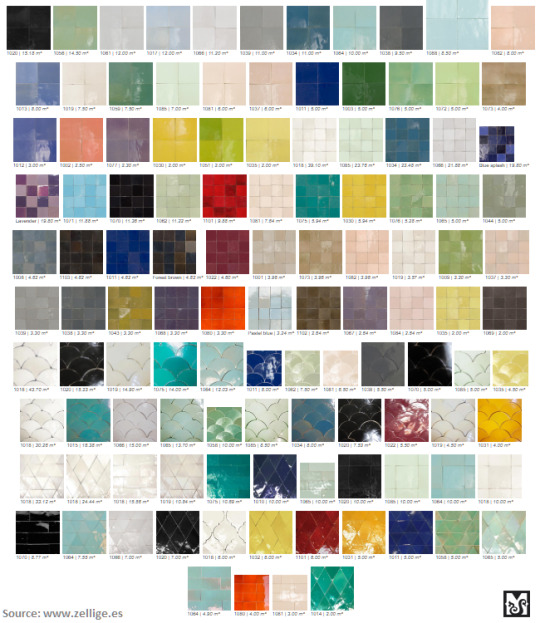
#zellige#azulejos marroquíes#zellige tiles#mosaic del sur#España#interior design#interior decor#floor tiles#wall tiles#decorative#tile designs#colors#glazed#personalized#international
0 notes